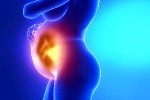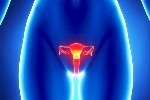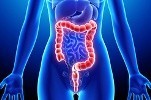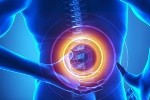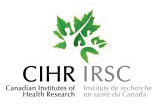Western Medical Acupuncture
Western medical acupuncture looks very similar to traditional Chinese acupuncture. Needles are inserted in various places in the body including often the hands and feet; they are agitated by hand and sometimes stimulated by electrical impulses and they are taken out again after a period of time; usually somewhere between 5 and 30 minutes.
However, there are considerable differences between the two approaches. A Western acupuncturist makes a medical diagnosis in the conventional way, uses needles to influence the physiology of the body according to the conventional (scientific) view, and regards the acupuncture as a conventional treatment along with drugs or surgery, or whatever else the patient requires. A traditional acupuncturist makes a diagnosis in terms of a disturbance in the body’s ‘balance’, which needs to be corrected with needles.
Acupuncture in the West
Several British doctors discovered the benefits of acupuncture independently, over the last couple of hundred years. Early in the 19th century a London surgeon with the name of Churchill published
two books on acupuncture describing how he treated patients with rheumatic pain by inserting needles into tender points (Baldry 2005a).
A century later, the famous Canadian physician William Osler (1849–1919) discovered acupuncture and recommended inserting hat pins into tender points in the back muscles to treat lumbago. Neither of
these eminent doctors used Chinese philosophy to explain acupuncture, but simply inserted needles into the painful points.
The modern history of Western medical acupuncture starts in the 1970s with Felix Mann, a medically qualified doctor who took the trouble to learn Chinese so that he could better understand the
acupuncture that he had learned in both Europe and China. The conclusions he drew from his studies and from his clinical experience were quite heretical at the time: ‘Meridians don’t exist; points
don’t exist’.
This liberated other acupuncturists to think the unthinkable and start to explore a rational approach to acupuncture.
About the same time, research had begun to provide the means to understand the mechanisms of acupuncture. Against the background of the gate control theory of pain (Melzack & Wall 1965), the
discovery of the ‘endorphins’ (Hughes et al 1975) was a major advance, followed shortly afterwards by studies that showed that acupuncture released the endorphins (Han & Terenius 1982).
This close association between acupuncture and the endorphins, now called ‘endogenous opioid peptides’, helped enormously to establish the credibility of acupuncture and this has been reinforced over
time by discoveries of other mechanisms of action, as well as by positive clinical trials.
Since the 1970s, Western medical acupuncture has gradually earned its place and become more widely accepted alongside conventional Western therapies in a modern health service. Western medical
acupuncture is based on a contemporary understanding of the body’s mechanisms.
Five Mechanisms of Western Medical Acupuncture
The five mechanisms can go a long way towards explaining the phenomena of acupuncture. Four of the mechanisms involve the nervous system and one involves the muscles. Each can be used for a different purpose, which is why anyone using Western medical acupuncture needs to understand the patient’s condition in terms of its conventional diagnosis and pathology. The different mechanisms require slight variations in the treatment techniques, so these need to be tailored for the individual patient. In practice, there is considerable overlap between the mechanisms, and treatment often activates more than one mechanism.
1. Local Effects
Acupuncture produces many of its effects by stimulating nerve fibres in skin and muscle. These sensory nerves form a network in the layers of the skin. Needling one of these nerves sets off action
potentials. The action potentials spread around the network locally, an effect that is known as an ‘axon reflex’. Various substances are released as a result, particularly one called calcitonin
gene-related peptide (CGRP).
This causes the local blood vessels to dilate, so the local blood flow increases. This effect can often be seen in patients having acupuncture: the skin around the needles often flushes bright red
with the increased blood flow, and afterwards a small ‘weal’ can be seen under the skin . The blood flow is also increased in the deeper tissues, which encourages tissue healing, for example in some
skin conditions or minor injuries. It may also improve the function of local glands, such as salivary glands.
2. Segmental Analgesia
The action potentials also travel up the nerve directly to its particular segment in the spinal cord where they tend to depress the activity of the dorsal horn, reducing its response to painful
stimuli. This is known as a ‘segmental’ effect, and is probably the main mechanism by which acupuncture relieves pain – the symptom it is most commonly used for.
Acupuncture inhibits pain from any part of the body which sends nerves to that particular segment of the spina cord. For example, the nerves from a painful knee joint enter the same segment as the
nerves from the muscles around it: so pain in the knee joint will be reduced by needles inserted in those muscles.
Actually, because the connections of the nerves are not confined precisely to a single segment, the segmental effect of acupuncture spreads to the adjacent segments as well.
3. Extrasegmental Analgesia
The action potentials produced by the acupuncture needle then travel on from the dorsal horn up to the brainstem. Here, they stimulate the body’s own pain suppressing mechanisms. If it is a
surprise to learn that the body should have mechanisms to suppress pain, then remind yourself of occasions when you have injured yourself without really noticing, probably because you were
concentrating hard on something else at the time, for example, while playing sport. Only when you relax after the match do you become aware of the pain (Melzack & Wall 1988).
Clearly, the brain can inhibit pain, and it does this by descending nerves, which release some neurotransmitters at every segment of the spinal cord. This is known as the ‘extrasegmental’ analgesic
effect – because it is not restricted to a single segment.
Acupuncture can activate the extrasegmental effect, and so have effects that extend to the whole body, well beyond the segment in which acupuncture is applied.
The extrasegmental effect is not usually particularly powerful – not enough to suppress pain altogether – but every little helps. The extrasegmenta effect does not seem to depend on needling particula points, but more on the achievement of an adequate amount of stimulation.
4. Central Regulatory Effects
After reaching the midbrain, the action potentials go on to influence various other structures in the brain. One of these is the cerebral
cortex, where the sensation of needling is registered. Other deeper structures are also stimulated, including the hypothalamus and limbic system. These are the sites of the various ‘regulatory’
effects of acupuncture.
Acupuncture has general calming effects on many patients and improves their well being. They become more cheerful and more motivated with a positive outlook on life, though this may be partly due to other factors in the therapeutic relationship. Patients may still feel the pain, but it bothers them less.
Acupuncture also has other important central regulatory effects. It is well known for reducing nausea, for example in pregnant women. It may also influence the autonomic nervous system, and various hormones, such as the female hormones that control the menstrual cycle.
According to the Western approach, some of these effects of acupuncture depend more on the type of stimulation that is given than the precise location where it is given.
5. Myofascial Trigger Points
Everyone is familiar with the fact that broken bones, injured joints, strained ligaments and tendons are painful. But most people look on
injuries to muscles as rather less serious and simply expect them to heal. In fact, when a muscle has been heavily overloaded or suddenly stretched – perhaps strained by an awkward posture at a desk,
or perhaps by carrying something heavy – it can develop a small area of damage that can be slow to heal and cause persistent pain. Small ‘knots’ of tight muscle fibres form, known as a ‘myofascial
trigger point’ (MTrP)
These MTrPs are far from fully understood; they may be a protective mechanism to ensure the muscle rests while it heals, or they may simply be a malfunction of the process of healing in the muscle.
Myofascial trigger points are tender, but they are not just ordinary ‘trigger points’ and should be distinguished from the tenderness in fibromyalgia. Unfortunately, there is no blood test or X-ray examination that confirms the diagnosis, and we have to rely on careful examination to identify them.
MTrPs can be distinguished by their typical features: A taut band can be felt running from one end of the muscle fibre to the other, with an acutely tender spot.
The pain produced by pressure on the tender spot is recognized by the patient as his or her own pain. The pain is referred some distance away, in a predictable fashion. In fact, it is often possible to work backwards from the site of the pain and predict the site of the MTrP.
The movement of the muscle is restricted by pain. Various lines of evidence suggest that myofascial trigger points were recognized by the ancient Chinese physicians, and they could even have been among the earliest medical conditions to have been treated with needles.
Contact Us
Chalmers Medical Building
328 Hwy 7 East Suite 201,
Richmond Hill ON L4B 3P7
Tel: 416 399-3888
E-mail: info@aahclinic.com
Conditions Treated
Effective Herbal Therapy for Inflammatory Bowel Disease
NO Surgery!
Carolyn XU Treats Ulcer Colitis Successfully
Considering Therapy?
Resource Links
References
Donation
Great things happen when you put your heart into it.
Click Here to Send us your request
Tips
Questions about your first appointment or if your insurance will cover the cost? Find more information below.


